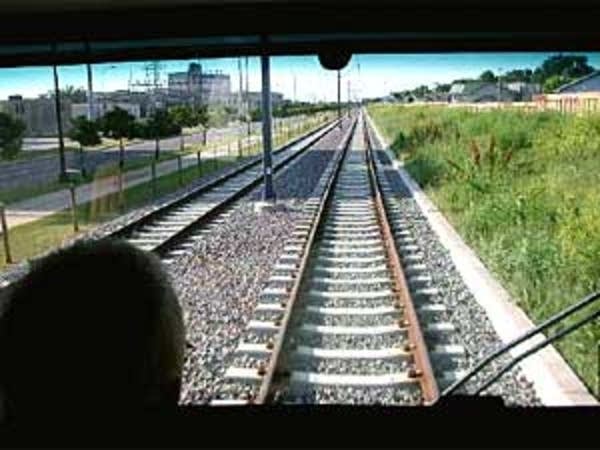U of M to make its case for alternate LRT route
Go Deeper.
Create an account or log in to save stories.
Like this?
Thanks for liking this story! We have added it to a list of your favorite stories.

Neither of the two big questions -- money for Central Corridor and its route through or near the University of Minnesota -- will be settled on Wednesday, when the Central Corridor management committee meets to discuss the project.
But the committee will hear some long-awaited numbers on the so-called northern alignment route, the one favored by the University of Minnesota.
[image]
The Metropolitan Council favors a route along Washington Ave. instead. Among other reasons, it's the route that keeps the project on the schedule, according to Metropolitan Council chairman Peter Bell.
Turn Up Your Support
MPR News helps you turn down the noise and build shared understanding. Turn up your support for this public resource and keep trusted journalism accessible to all.
The Washington Ave. proposal calls for a transit mall, which means much of the car traffic would have to be diverted from the busy street.
The cost estimate for diverting the traffic and finding parking for the cars won't be known for a few weeks, but it's clear where some of the traffic could be diverted, Bell says.
"We might use East River Rd. to run some of the traffic," said Bell. "There might need to be some work on Grainery Rd., which is a road that runs far north on the northern parameters of the university campus, and we might connect some of the traffic and work it around there."
The cost of diverting traffic from Washington Ave. and redesigning dozens of nearby intersections to handle it would be born by the Met Council, the university, Hennepin County and the city of Minneapolis.
Money in the proposed $909 million Central Corridor project budget would help pay some, but by no means all, of the traffic diversion costs.
The alignment spat could delay or even kill the Central Corridor project, given the competition for federal money.
The university argues the northern alignment route is a better value. Kathleen O'Brien, the U of M's vice president for operations, says that route would bring the light rail trains north of the new Gopher football stadium and through Dinkytown.
"We believe the northern alignment is going to cost less, will have less of a ride time, will have comparable ridership," O'Brien said.
The problem, according to Peter Bell, is that a decision to go with the northern alignment means a new set of environmental and other studies, that will delay the Central Corridor project a year. The delay would add at least $40 million in cost due to rising concrete, steel and other materials costs.
The U of M counters the northern alignment actually saves money in the long run, because there are lower traffic mitigation costs compared to Washington Ave.
A northern alignment, the U of M argues, avoids the loss of $100 million in revenue to its Washington Ave. medical complex, which could result from losing patients who can't easily get to the hospital or doctors' appointments.
Peter Bell isn't buying the revenue loss projections.
"That's an assertion that I haven't seen validated by studies or surveys and the like," Bell says.
The Met Council also wants to keep the Central Corridor project on schedule to apply for federal matching dollars. One reason is competition from other areas of the country.
Other cities, including Denver and Salt Lake City, are also poised to apply for the scarce federal transit funds. However, people in Congress and others familiar with the inner workers of the FTA argue the Met Council's timeline is overly optimistic.
The Met Council worries the alignment spat could delay or even kill the Central Corridor project, given the competition for federal money.
The U of M argues taking time to iron out the alignment dispute solves problems that could erupt later. Officials there are counting on Minnesota's congressional delegation to assure federal officials the solution will be worth the wait.



